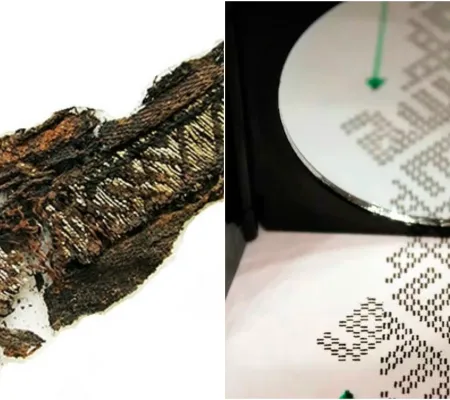If Aby Warburg’s goal was to establish the autonomy of the image, that goal has certainly reached its apotheosis with the rise of digital media. On Twitter, Facebook, Instagram and Snapchat, images reign, and they have become powerful tools of manipulation and persuasion.
The rise and fall of the Viking “Allah” story, which captured headlines around the world for its seductive claims about the discovery of a Viking textile with Arabic writing, was propagated and argued largely by means of a highly manipulated image, but it was also a sequence of images that allowed Dr. Stephennie Mulder to deconstruct false claims about the textile, when she wrote a 60-tweet Twitter thread debunking the story in October of last year. In this image-rich environment, the work of art historians, cultural historians, and media scholars has never been more urgent, as university administrators work to deconstruct and defund the arts, humanities, and traditional paper libraries, thereby restricting access to the analog history of images, consigning students and scholars to the endless matrix of digital duplication. How can the prescience of Warburg’s vision be put to use in the world of social media image construction and circulation, where “truthiness“ reigns over “truth”? How does Bilderfahrzeuge work in the tangled networks of the digital age?
Stephennie Mulder is Associate Professor of Islamic Art and Architecture at the University of Texas at Austin. She is a specialist in Islamic art, architectural history, and archaeology. She worked for over ten years as the head ceramicist at Balis, a medieval Islamic city in Syria, and has also conducted archaeological and art historical fieldwork throughout Syria, Egypt, Turkey, and elsewhere in the region.
Mulder is the recipient of UT Austin’s Hamilton Book Award Grand Prize, among other awards, for her book The Shrines of the ‘Alids in Medieval Syria: Sunnis, Shi’s and the Architecture of Coexistence (Edinburgh, 2014). She has appeared in media interviews and written editorials for media outlets such as the BBC, IB Times, al-Jazeera, the L.A. Times, Huffington Post, and U.S. News and World Report on cultural heritage issues, Islamic art, antiquities, and the history of sectarian relations in Islam.


